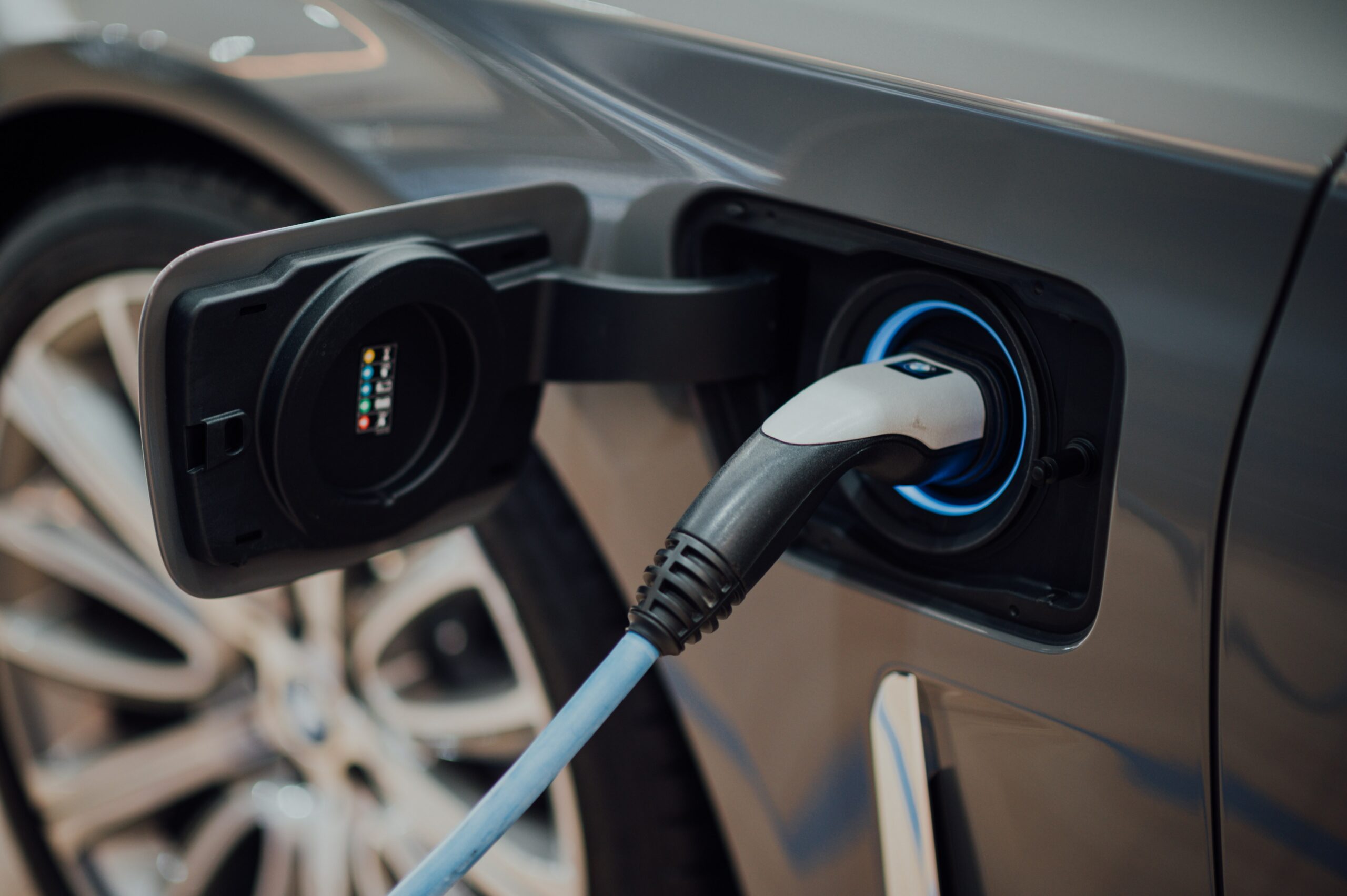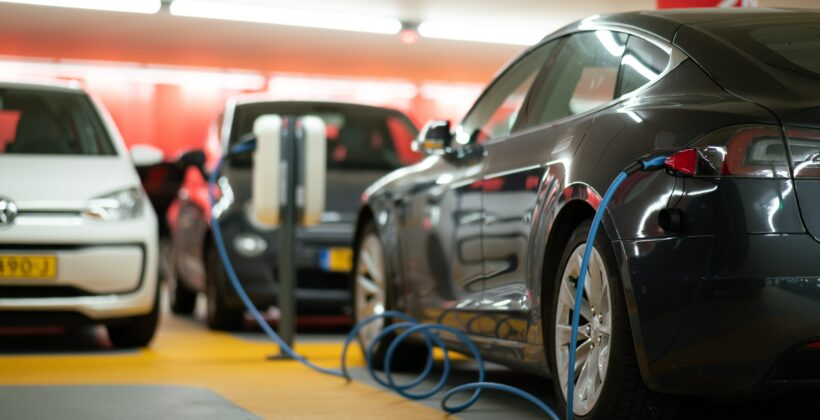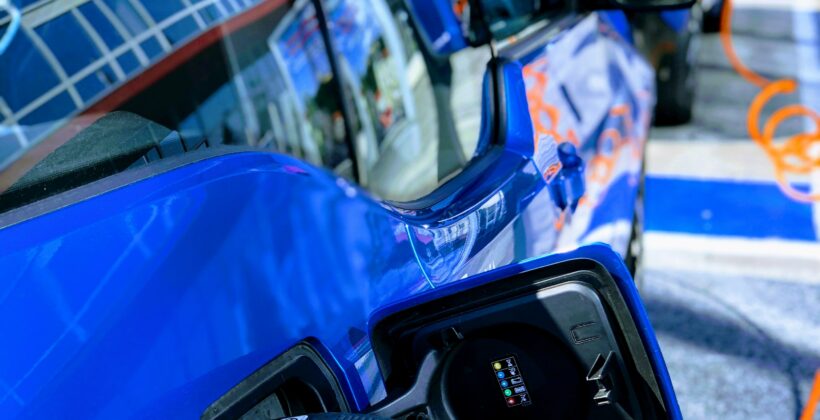
In 2021, the oil-rich Scandinavian nation of Norway hit a critical point in its rapid transition: 60% of all new cars sold so far have been fully battery electric vehicles (EV). In the month of August that went up to 72% of new vehicles. In every single one of Norway’s 11 counties, electric cars accounted for more than 50% of car sales – a first in both Norway and the rest of the world.
Not only is the growth of the EV market in Norway unparalleled in any other nation, its ascendancy may be evidence that it has activated a tipping point, where the changes within the market have become so significant and far-reaching that there is no going back. In Norway, the internal combustion engine (ICE) is quickly becoming a relic of a bygone era; never to return.
By comparison, battery EVs in the UK make up just 7.7% of the current market, although this in itself is a 88% increase on the year before. When you include much more problematic plug-in hybrid electric vehicles, the total market share in the UK is nearly 14%, an increase of over 112% in the space of a year. The latter though, depending on circumstances, can bring less or little pollution gains. Globally, the EV markets are revving up with annual growth forecasts of over 22%, reaching an expected valuation of nearly $803 billion by 2027. Even without any government policy and new regulations, half of global passenger-vehicle sales in 2035 will be electric, according to BloombergNEF.

The ascendancy of EVs in Norway is having far reaching impacts at the other, more polluting end of the market too. In 2021, only 10% of cars sold so far are powered by petrol or diesel. In 2005, petrol and diesel vehicles made up 100% of car sales. In 2011, diesel-only cars made up 75.7% of yearly sales, a peak which would never be seen again. At this rate, Norway will easily hit its 2025 target of ceasing the sale of petrol and diesel vehicles, as the nation is going electric. But the question remains, how on earth did they do it?
Decarbonising road transport, and rapidly transitioning away from the ICE, is vital if we are to hold global temperatures to a rise of 1.5 degrees celsius and stave off the worst impacts of climate breakdown. This will also need a decisive shift away from the private car to other mass transit systems such as rail, bus and tram, but having cars go electric is vital too. Road transport is currently responsible for around 11.9% of global greenhouse gas emissions every year.
About 60% of road transport emissions come from passenger travel, which includes cars, motorcycles and buses. Beyond the emissions, are the health impacts of continued car reliance. Tailpipe emissions from passenger vehicles is a leading cause of the air pollution from burning fossil fuels that, in total, leads to over eight million deaths in a year with around 91% of humanity living in places where air pollution exceeds WHO limits. There are also huge impacts on the natural world from the continued dominance of road transport, with one study finding that the world’s road network has fragmented the earth’s landmass, creating hundreds and thousands of small pockets of land that are too small and disparate to support a rich biodiversity of life; the very ecosystems upon which humanity depends.
To make matters worse, emissions from road transport continue to rise. Between 1990 and 2007, emissions from road transport accelerated by 45%. Despite a brief reprieve during the pandemic, where lockdowns made transport illegal in some parts of the world, global transport emissions are set to bounce back unless urgent policy changes are mandated. EVs are set to play a big part in the required policy changes, and are being touted as the most feasible pathway to decarbonising road transport. The total mitigation potential of EVs is significant, with one study estimating the global EV roll out could prevent 125 million tonnes from entering the atmosphere every year from 2030, rising to 1.5 billion tonnes by 2050, which is more than all the emissions created by the African continent in 2019.

It’s important to stress, however, that EV’s won’t get us to a zero carbon global economy on their own. Even under the most optimistic roll-out forecasts, EVs will deliver a 70% reduction in carbon emissions by 2050 when compared to a business-as-usual scenario. These forecasts are also highly contingent on the energy grid decarbonising at pace, as when EVs are powered by electricity generated through the combustion of fossil fuels such as coal, their eco-credentials run out of gas. The remaining 30% of road transport emissions will need to be curtailed by moving away from the passenger car entirely, regardless of whether it’s electric or not, favouring active travel options, such as the humble bicycle, or mass transit options, such as electric buses. Such a feat becomes less daunting when you consider that most car journeys are incredibly short. In the UK, the vast majority of car journeys are under ten miles in distance. And in cities, this fact is even more pronounced: a third of car trips in London are shorter than 2 kilometres and around six in ten car journeys are made alone, driving solo.
There are also very real concerns around the environmental costs of the wholesale transition towards EVs and the industrial conversion necessary to fuel it. The batteries used in EVs contain scarce and expensive metals that are mined at a high social and environmental cost, with long supply chains to boot. For instance, cobalt is likely mined – industrially or by hand – in the Democratic Republic of Congo (DRC), where the world’s largest resources are, before being shipped to Finland to be refined, before heading to China, where the majority of the world’s battery production takes place, and then being shipped back to Europe to enter EV production lines. This supply chain stretches 20,000 miles before it is installed into a zero-emissions vehicle. If the price of these rare commodities spike too, the whole EV rollout could be in jeopardy and EVs may not achieve price parity with ICE vehicles by the middle of this decade. Recycling, and creating a circular economy for batteries, will make or break the EV revolution. One such firm, Redwood Materials, believes that ‘urban mining’ could make a marked contribution to create a circular economy for batteries by tapping into the huge amount of electronic waste consumers throw in the bin: 300 recycled smartphones contain enough cobalt for an EV battery. In 2018, 9,023 smartphones were thrown away every second.
The rise of the EV in Norway is particular to the Scandinavian nation, but it has all the ingredients of what it takes to drive a rapid transition, providing lessons and hope for other regions and countries. And while EVs only began eating up more and more market share from 2010 onwards, Norway’s interest and research into them began as far back as the 1970s.
Against the backdrop of the 1973 oil crisis, where an OPEC oil embargo send shockwaves through global markets and saw oil prices climb nearly 300% in the months that followed, a Norwegian named Lars Ringdal set to work on designing a small electric car complete with plastic bodywork produced at the plastics factory he owned in Aurskog-Høland. This prototype EV became the blueprint for the PIV EVs, developed and brought to market by Lars’ son, Jan, in the early 1990s.
Although the PIV vehicles failed to make the impression Lars and his son had hoped for on their fellow Norwegians, the arrival on the scene of a genuine alternative to fossil fuelled vehicles lay the foundations for a policy environment conducive to the growth of the EV market. The first step was removing disincentives within the Norwegian vehicle market to ensure that consumers could get behind the wheel on an EV without breaking the bank. In 1990, Norwegian environmental NGO Bellona successfully won a campaign to exempt EVs from value added tax (VAT), with some help from the Norwegian synthpop band A-ha. From here, pro-EV legislation snowballed in the Norwegian parliament, with free parking for EVs given the green light in 1993, the annual licensing fee for EVs reduced significantly in 1996, and the following year EVs were given exemption from paying tolls. A year later, the taxable benefit on companies that splashed out on EVs was reduced.
By the time the 21st century arrived, the Norwegian EV market was firmly in fourth gear. While government incentives continued to foster a domestic EV market conducive to growth, and foreign competitors sought to get in on the action, climate concerns were also beginning to rise up in the political agenda too. The recent general election in Norway has been dubbed a climate election, with public concerns bubbling up around the urgency of climate action now required and the risks posed by phasing out of the domestic oil and gas industry, such as job losses and tighter public finances.
The combination of tax exemptions and subsidies have made EV’s the more attractive option for consumers – not only are they cheaper in some cases, but they come with free parking, increased access and social status too. These policies were set to be phased out in 2018 or when the country reached a specific penetration rate of 50,000 EVs in use. This target was hit in 2015. As of 2020, there are nearly 350,000 EVs on Norwegian roads. The incentives are set to stay in place until at least 2021.
Legislative boom
The rise of the EV in Norway shows what targeted and resolute policy can achieve over just a few decades. The initial legislative foundation of the Norwegian EV market began in the early 1990s with the VAT exemption on EVs, free parking, exemption from paying tolls and a reduction in the annual vehicle license fee. This was followed with more incentives coming into law in the first decade of the 21st century, including a further VAT exemption and access to bus lanes. In fact, when EVs were given access to bus lanes in 2003, demand skyrocketed to the extent that domestic manufacturers couldn’t keep up with waiting lists. The pent up demand was then met by foreign manufacturers looking to cash in on the EV mania. In 2010, the Norwegian government launched Transnova to accelerate the installation of supporting infrastructures for EVs, such as fast charging points, many of which are free to use in public parks.
Alongside incentivising the uptake of EVs, the Norwegian government also taxed the ICE. As most cars in Norway are imported, on top of the regular 25% VAT charged on most consumer goods, all ICE vehicles used to be subject to an additional purchase tax. These are also taxes on tailpipe emissions that push the price up of ICE vehicles relative to their green peers, as well as a weight tax that penalises larger, and more emissions-intensive vehicles like SUVs.
Despite no additional legislation being introduced to bolster the domestic market after 2011, the sale of EVs accelerated rapidly. In 2012, the market share of EVs was just 3% in Norway but by 2015 it had hit 23%. So far this year, 60% of all vehicle sales in Norway have been electric. The combination of tax exemptions and subsidies, provided over an extended period of time to give consumers both confidence and consistency, have made going electric a no-brainer for Norwegian citizens.
Showing off a trusted product
Beyond the green credentials, EVs have quickly become a status symbol in Norway, aided by the arrival of Tesla and other luxury car manufacturers entering the market. Not only does an EV say “I care about the environment”, it also says “I can afford to care about the environment”. While appealing to consumerist values may not be a feasible long-term strategy for stimulating rapid transition, appealing to individuals’ aspirations can hasten the uptake of certain goods and services.
In fact, the proliferation of aspirational products, and the visibility of the infrastructure that supports them, can actually trigger higher rates of demand through the phenomenon of behavioural contagion. Surveys conducted in the USA suggest that when a workplace installs a charging point, employees are 20 times more likely to buy an EV. And beyond the behavioural impact of seeing EVs and their charging infrastructure around you, there is also evidence that key people who help consumers make these choices, such as EV car salespeople, can act as transition intermediaries to further the transition.
It’s not just why people are showing off their EVs, it’s also about what they are showing off. And in Norway, electric vehicles are considered a proven, trusted product that can deliver the same benefits as a petrol or diesel car, with far more co-benefits. The trust in EVs throughout Norway has been garnered through their long history there, where research and manufacturing prototypes dates back to the 1970s, and the fact that charging infrastructure was scaled up alongside bringing EVs to market. Nations that want to go electric must be wary of getting the infrastructure built and operationable as soon as possible, as if consumers feel like it’s an inconvenience to choose electric, the transition could be put into reverse.
Tipping points
The success of the EV in Norway may also be evidence that a tipping point has been reached. Tipping points occur when small changes can trigger large and systemic shifts, which once reached creates a totally new and different system. In other words, when tipping points are reached, there’s no going back. The combination of taxes, subsidies, supporting infrastructures and other incentives have made EVs not just the cheapest option on the market, but also the most attractive because of the social and environmental benefits they offer. This appears to have created a tipping point in consumer preference, where an EV is the de facto choice for a Norwegian motorist. While the rise of the EV is currently a Norwegian phenomenon, it could create a ‘tipping cascade’ which ripples through the global economy and accelerates rapid transition in other industries and across borders.